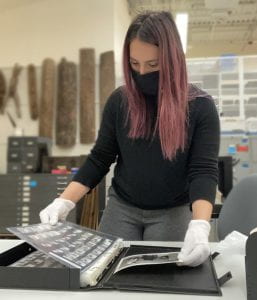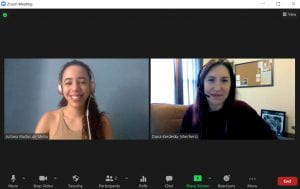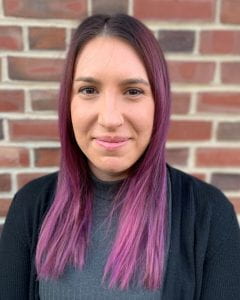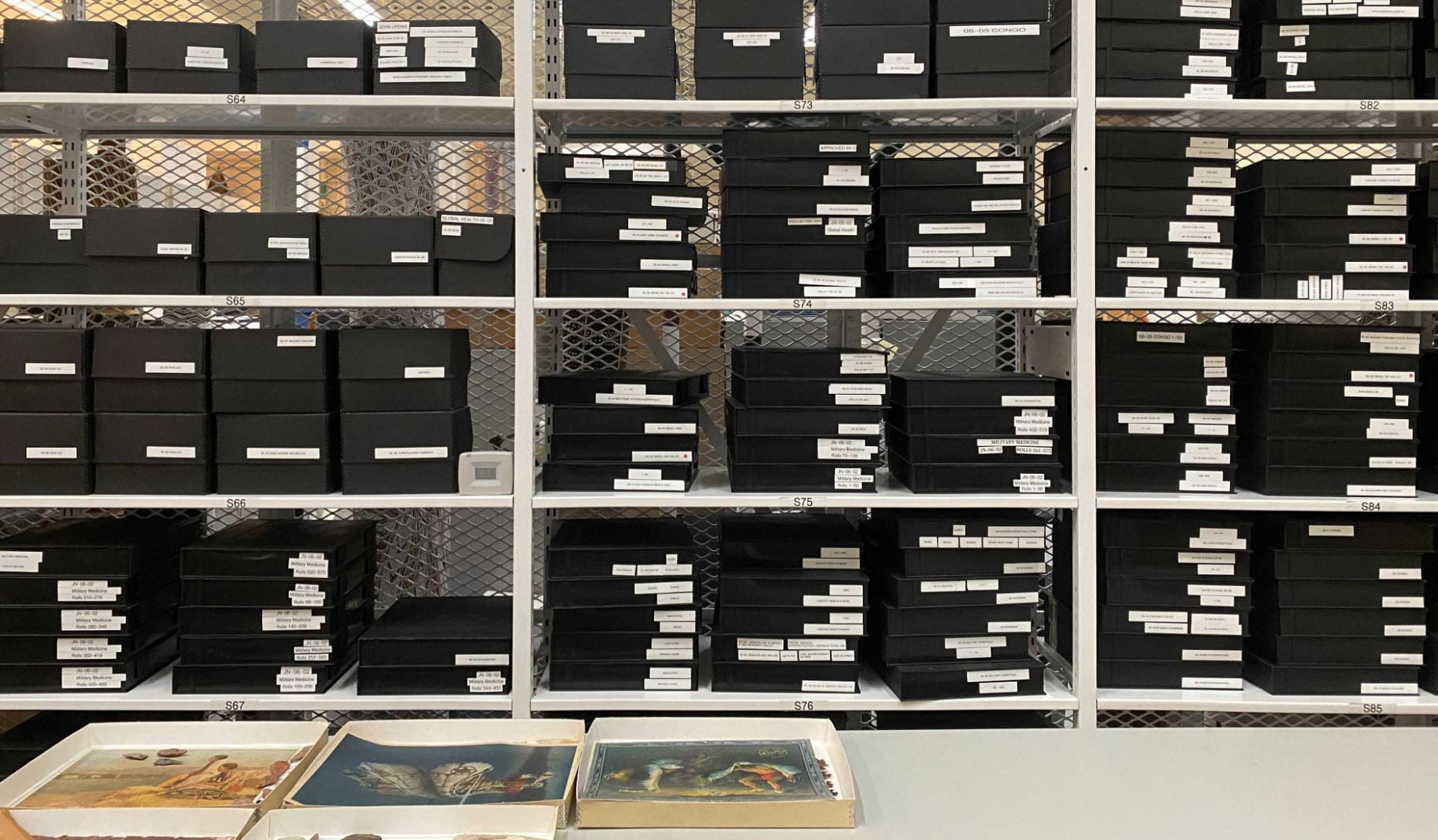
In 2016, the Hood Museum of Art acquired the complete archive of award-winning photojournalist and war photographer James Nachtwey ’70. The James Nachtwey collection documents over 40 years of war, violence, genocide, famine, health crises, and environmental disaster around the world, captured in various photographic formats and collected over the course of Nachtwey’s career. In the spring of 2020, I was hired by the museum to process the Nachtwey collection and build an archival program around it. As the archivist, my task is to develop an archive around the Nachtwey collection for the Hood Museum, which requires confronting complex issues of cultural sensitivity and empathy. In order to process the collection from a framework grounded in human rights, empathy, and inclusion, I must challenge traditional archival theory and practice, examine current interdisciplinary research and approaches to social justice, and develop methods to integrate into daily practice.
The James Nachtwey collection is made up of more than 500,000 images, including 330,000 photographic negatives, 170,000 digital image files, 7,200 exhibition-quality prints, 2,000 large-format works, 25,500 small-scale prints and 12,500 contact sheets and depicts subjects such as the Rwandan genocide, the Somali famine, the Bosnian war, the IRA hunger strikes, the AIDS crisis in sub-Saharan Africa, and conflicts in Chechnya, Iraq, Afghanistan, Palestine, and the September 11, 2001 attacks on New York. The images in the Nachtwey archive do not only document Nachtwey’s career as a photojournalist and war photographer but depict moments in the histories and experiences of the individuals and communities on the other side of the camera. Because it is impossible to separate a record-in the Nachtwey case, a photograph- from the politics of its origins, its consequences and affects, and the humanity it documents, I consider the individuals and communities represented in the Nachtwey collection through every phase of processing. Exclusion from the archival record paired with an archivist that adheres to a traditional notion of objective and neutral custodianship endangers archives to continue to perpetuate and reinforce dominant narratives and knowledge structures. It silences the histories and experiences of marginalized individuals, groups, and communities.
The James Nachtwey collection is made up of emotional and traumatic images. Commitment to empathy, empowered interrogation, and intervention at all levels of archival processing ensures the individuals and communities photographed throughout are treated with dignity and their unique histories and experiences acknowledged. Archival description is the most recognizable way archivists shape a collection. The process is documented in a finding aid, which contains detailed, indexed, and processed metadata and other information deemed pertinent about a collection that is made available for users. As an archivist, I can elevate marginalized or underrepresented voices by actively including them in the finding aid with extended historical notes that contain contextual information surrounding a series of images removed from their connection to the photograph’s creator. I also adopted processing guidelines such as prioritizing the use of language that individuals or communities use to describe themselves and reconsidering original language used in the creation of a record that could be harmful to the individuals and communities represented in or using the collection. Because of the scope of the Nachtwey collection, the diversity of experience represented in the images is an immense but worthwhile undertaking. It is also one I knew deserved more attention than I could give it working on the project alone.

In order to examine the collection thoroughly, I developed the student role of Diversity, Equity, Accessibility, and Inclusion (DEAI) Archives Assistant as a commitment to building an archive around DEAI principles. Juliana Bastos de Mello ‘22 joined me remotely in the summer. Juliana’s main purpose as the DEAI Archives Assistant is to center cultural sensitivity throughout the phases of processing the Nachtwey archive while critically interrogating the role of archives in the maintenance of collective memory and its potential for social justice. This is accomplished through research, consultation, and participation in day-to-day archival functions. Juliana conducts research on archival theory, social justice and the specificities of the events photographed by James Nachtwey. By combining archival theory and event-specific human rights research, Juliana helps create archival policy and practice that is built on equity and respect for the marginalized populations that make up the Nachtwey collection and any other collections the Hood acquires in the future. Creating Juliana’s position is a small intervention that I can take as an archivist that to aid the efforts toward building social justice into the structure of the archive, and the museum, at the Hood.
Creation of the DEAI Archives Assistant role was inspired by efforts in the field to ground archival work in diversity, equity, accessibility and inclusion. For more information:
- “Anti-Racist Description Resources”, Archives for Black Lives in Philadelphia’s Anti-Racist Description Working Group, October 2019.
- “Identifying & Dismantling White Supremacy in Archives”, Michelle Caswell and Grace Brilmyer
- “Language Matters: Writing Inclusive Finding Aids and Description”, Armando Suárez, Archival Outlook, July/August 2020
This post was authored by: Dana Kerdesky, James Nachtwey Archives Fellow.

ABOUT THE AUTHOR
Dana Kerdesky joined the Hood in May 2020 as the James Nachtwey Archives Fellow. Dana assists with the description, preservation, and accessibility of the complete archive of photojournalist and war photographer James Nachtwey. Dana holds an M.S. degree in Information Studies and an M.A. in Public History, both from the University at Albany, State University of New York. She earned her B.A. in History from the University of Delaware. Dana comes to the Hood from Historic Hudson Valley, where she oversaw a collections care program spanning several historic homes. She has also held archival internships at New York State Museum and the Franklin D. Roosevelt Presidential Library.

Comments are closed.